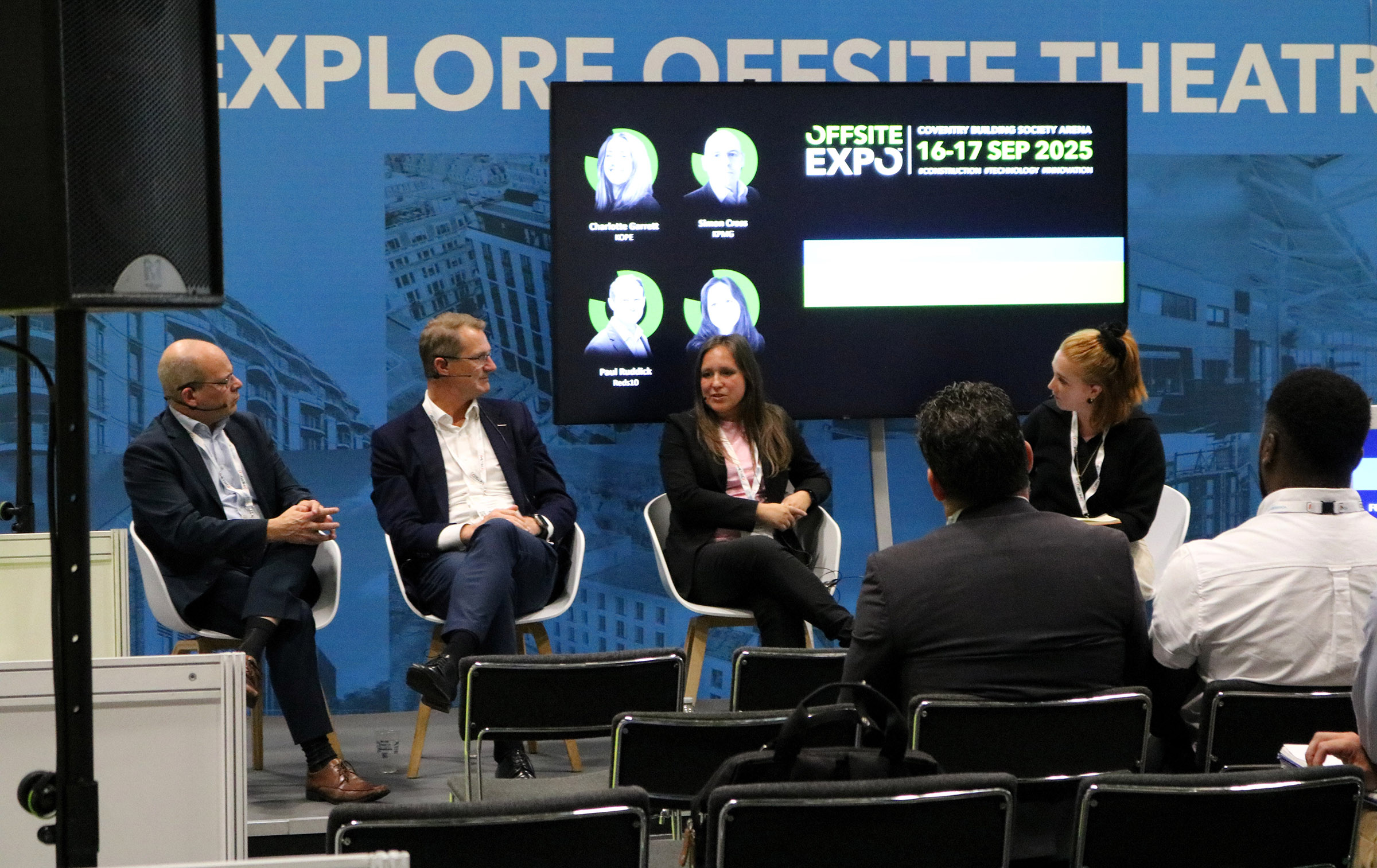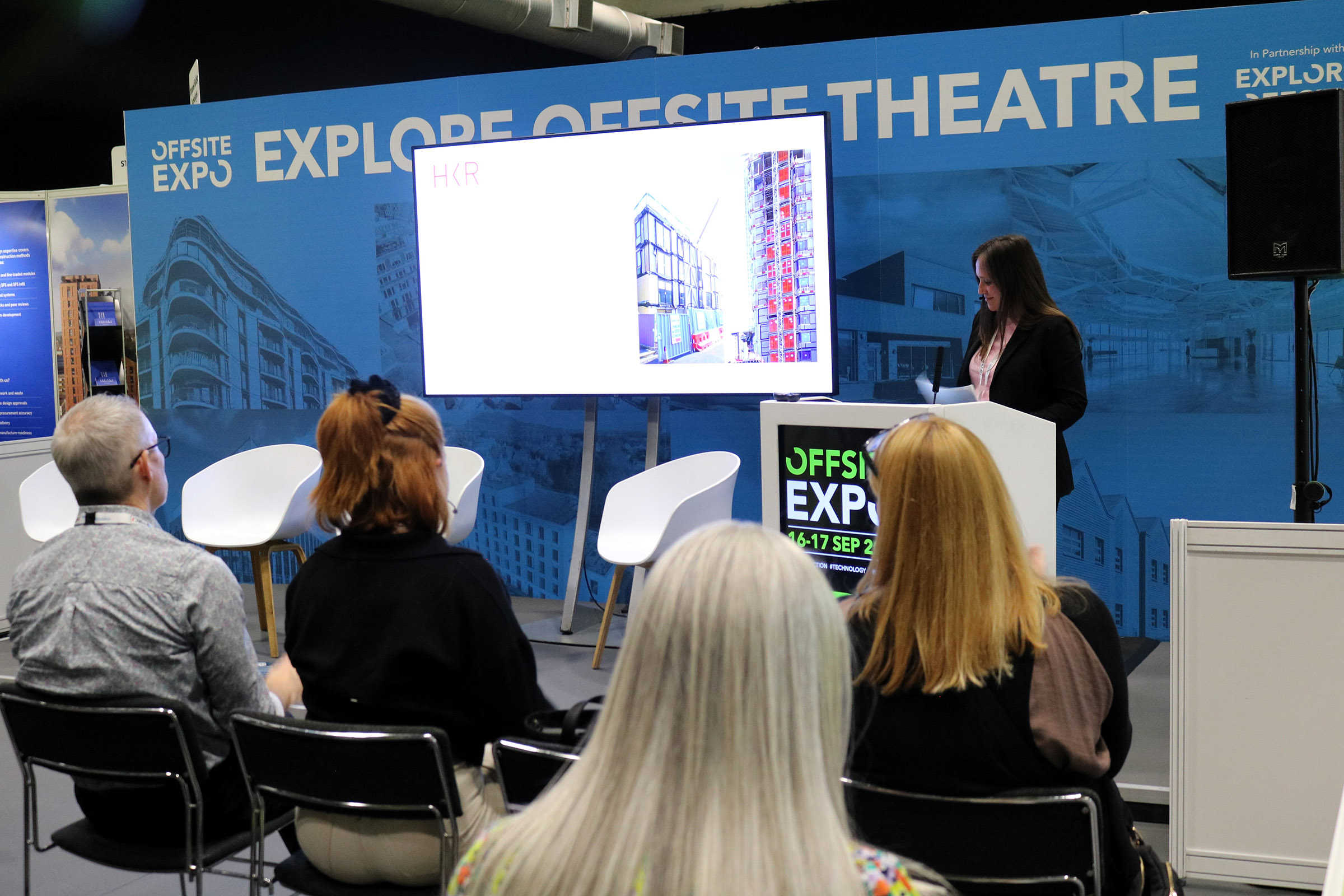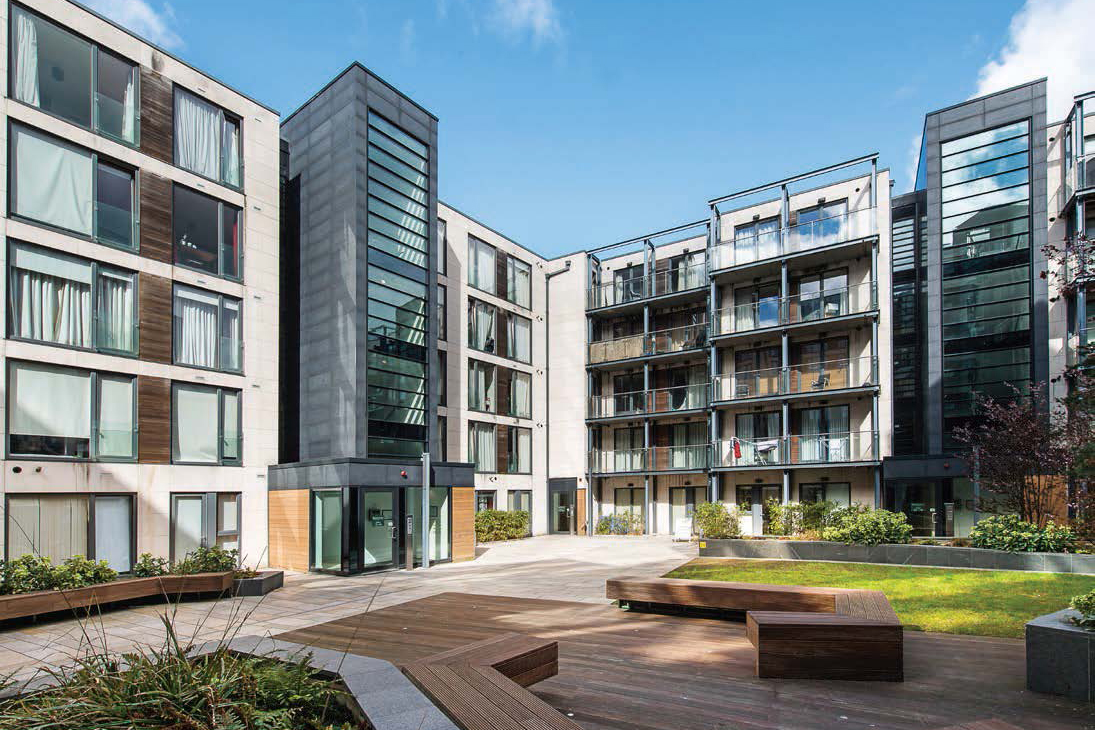16.09.25
Thought piece
Offsite construction offers a plethora of advantages of traditional construction, with one of the biggest benefits being the increases to productivity.
Whereas traditional sites are often built in a linear fashion, offsite allows for building components to be built in sequence, therefor decreasing the overall build time. But what other boosts to productivity can offsite construction offer? And how to you get an industry typically adverse to change, to adopt these methods?
Ahead of Offsite Expo, we spoke to Ayna Azhigali, Director at HKR Architects, to find out.

What are the more significant ways that offsite construction is solving productivity challenges in the sector?
We see a lot of advantages, and generally one of the biggest ones is time.
When you prefabricate and assemble modules in a controlled factory environment, production is unaffected by adverse weather conditions such as rain and snow. This approach also enables parallel work streams. While foundations and utilities are installed on site, the superstructure and modules can be manufactured simultaneously. This overlap significantly changes the timeline, so processes that are sequential in traditional construction are different here. You can really shorten the construction time.
In addition, at the moment what we see in the UK is a real shortage of labour, especially with the new generation, as they don’t necessarily want to enter this profession. Having factory conditions, which are safe from adverse weather and generally much safer to work in and more technologically advance, will attract more women and younger people to the industry. It will also help to address the current workforce shortage.
Additionally, the quality is usually higher, with greater reliability and precision in factory-based construction. In many projects we’ve worked on, it has reduced the need for post-construction repairs. Post-construction repairs are one of the greatest drains on productivity in traditional building methods, so I would say this approach is going to remain at the forefront of significantly improving productivity.
Sustainability is a very big part of this. If you think about sustainability, it’s not only about less waste, less noise, and less traffic. You don’t just think of it as productivity, but actually as a more sustainable, efficient workflow focused on achieving objectives without unnecessary inefficiencies. It reduces transportation because you don’t need to bring all the raw materials to site. It minimises the number of people on site, reduces the number of different trades coming in at different times and schedules. So this efficiency also brings productivity.

How does our offsite construction help with the integration of design and manufacturing?
You have to design for manufacture and assembly, so DfMA from the outset is essential. It doesn’t mean that all buildings have to be fully volumetric modules, it’s about understanding the recognised categories of modern methods of construction.
There are three important words to remember: systemise, optimise, and standardise. This does not mean uniformity in all elements, rather, it’s about the standardization of repetitive components, where variation provides no functional or aesthetic benefit.
When you bring in standardisation in assembly, you reduce inefficiencies while still preserving architectural flexibility. Standardising connection systems, for example, changes the speed, reliability, and safety of on-site assembly, while enabling suppliers to work from common frameworks that support integrated efficiency.
Another highly beneficial element is a shared BIM model. From the beginning, all designers should be working in one BIM environment so that all systems are integrated. This helps with collaboration and ensures there are no clashes. What’s currently missing in the construction industry is that BIM often gets stuck at the architectural stage. Sometimes engineers use it, but it rarely flows through to the construction side or beyond. What we should be thinking about is one integrated process that moves from design, to construction, to facility management.
In design, BIM is used to bring everything together – all the MEP systems, fire safety, structure, specifications. But it shouldn’t stop there. Contractors can then use it for material take-offs, site sequencing, or integration with CNC machinery and robotics in the factory – directly producing from the model. And because the model contains all specifications, it can also be used by facility management. They can use it for proactive operations, knowing exactly where every element sits. It even improves efficiency for life and safety issues, ensuring proper maintenance.
Logistics planning is another very important point, especially when dealing with prefabricated components. You need to plan when and how things are delivered – it must be just-in-time. Different tracking tools and visibility technologies help ensure accuracy and efficiency.
The challenge here is getting general contractors to adjust to this systematic approach.
What is your interest in Offsite Expo?
We want to do a bit of education, to help people understand.
What feels unfortunate at the moment in the UK is that a lot of factories have been closing, and there’s been quite a bit of bad press about offsite construction. There’s also a misunderstanding of modern methods and how it could be integrated in architecture. This is not about building repetitive boxes, but far from this, it is about achieving inspirational design using modern technology, innovation and prefabrication in a clever way to enhance productivity, efficiency and safety.
The construction industry doesn’t seem to be evolving very fast, but it should be, we should be at the forefront. We should be adopting more technologies, creating safer and better conditions for workers, and building in smarter ways. Architecture should be at the forefront of new and modern ways of living, not lagging behind.
So, our participation in this event helps us bring that message forward. It allows us to meet like-minded people and see what collaborations can be made during these important discussions.

